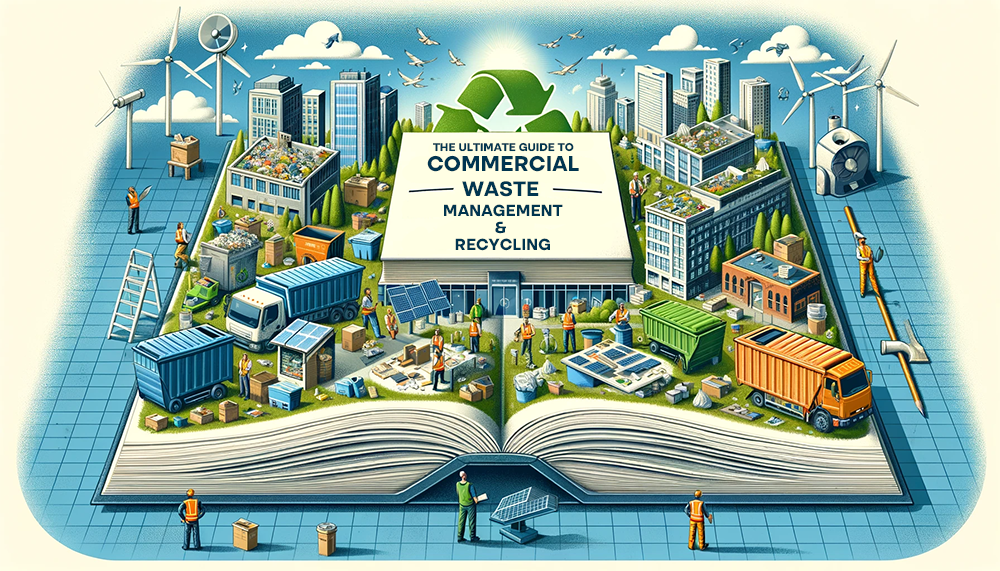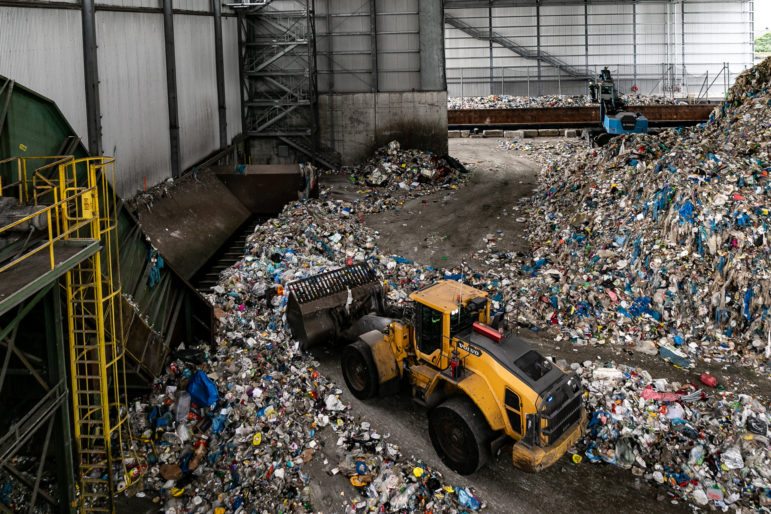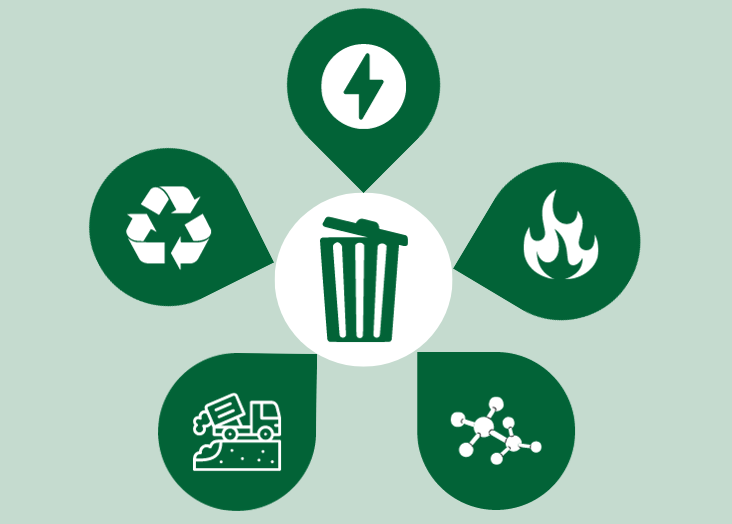Recycling Lives Services: Changing Waste into Belongings Resources
Recycling Lives Services: Changing Waste into Belongings Resources
Blog Article
Recognizing the Category and Handling of Numerous Sorts Of Waste
Effective waste monitoring is critical for ecological sustainability, requiring a detailed understanding of the category and handling of numerous waste kinds. House waste, industrial by-products, hazardous products, digital refuse, and organic remnants each require unique protocols to make certain security and lessen ecological damage.

Household Waste
Family waste, including a broad array of thrown out materials generated from day-to-day living tasks, stands for a significant element of the overall waste stream - recycling lives services. This group consists of organic waste such as food scraps, yard trimmings, and paper items, along with not natural products like plastics, steels, and glass. The varied nature of home waste necessitates reliable classification and management to alleviate environmental influence and advertise sustainable living practices
Efficient family waste monitoring begins with segregation at the resource, promoting recycling, composting, and risk-free disposal. Organic waste, for instance, can be composted to generate nutrient-rich soil modifications, lowering land fill burden and improving soil wellness. Recyclable products, including paper, glass, and certain plastics, can be processed and repurposed, saving resources and reducing energy consumption related to new material production.
Additionally, harmful household waste such as batteries, digital devices, and cleaning chemicals requires specialized taking care of to avoid dirt and water contamination. Public understanding campaigns and practical disposal options play important duties in ensuring correct disposal and recycling of these materials. By applying robust waste decrease techniques and fostering community engagement, municipalities can significantly ease the environmental footprint of household waste.
Hazardous Waste
Industrial waste, a major factor to international waste generation, encompasses a varied range of products generated by manufacturing, building and construction, and various other industrial activities. This classification includes by-products such as scrap metal, plastics, rubber, chemicals, and various other deposits. The make-up and volume of commercial waste can differ considerably relying on the market and production processes included. Reliable management of commercial waste is important for lessening ecological impact and advertising sustainable techniques.
The handling of industrial waste usually includes several procedures: collection, treatment, disposal, and segregation. Collection systems are developed to efficiently gather waste materials from various resources within an industrial procedure. Partition is critical, as it ensures recyclable products are divided from non-recyclable ones, which can be guided in the direction of ideal recycling or disposal channels. Treatment processes, consisting of physical, chemical, and organic methods, are used to decrease the toxicity, quantity, and ecological effect of the waste. Finally, disposal approaches like landfilling or incineration are utilized for waste that can not be recycled or treated.
Embracing techniques such as waste minimization, resource healing, and recycling can considerably reduce the concern of hazardous waste on the setting, adding to even more lasting industrial practices.
Hazardous Waste

The category of contaminated materials is usually based upon its physical and chemical attributes. Poisonous wastes have harmful substances that can create damaging wellness impacts even at reduced concentrations. Destructive wastes can damage or destroy living cells and products. Combustible wastes can conveniently fire up, posturing fire dangers, while responsive wastes can create explosions or launch poisonous gases upon call with other materials.
Reliable contaminated materials monitoring entails a number of crucial methods: identification and segregation of dangerous products, safe transport and storage, and proper treatment and disposal. Therapy techniques may include chemical neutralization, incineration, and stabilization. Regulative conformity is important, led by frameworks such as the Source Preservation and Recovery Act (RCRA) in the USA, which makes sure ecologically sound and safe administration of hazardous waste.
Electronic Waste
Electronic waste, frequently abbreviated as e-waste, stands for an expanding obstacle in waste monitoring due to the rapid obsolescence of modern technology. This classification incorporates a wide series of disposed of electronic devices, consisting of smart devices, computer systems, tvs, and family home appliances. The intricacy of e-waste exists in its structure; these products have a mixture of useful materials such as gold and copper, as well as dangerous compounds like mercury, cadmium, and lead.

Regulation and guidelines, such as the European Continue Union's Waste Electrical and Digital Devices (WEEE) Directive, aim to advertise accountable e-waste monitoring. These plans mandate manufacturers to assist in the collection and recycling of electronic products, therefore decreasing the burden on land fills and reducing ecological contamination.
Organic Waste
Organic waste, encompassing eco-friendly materials such as food scraps, backyard trimmings, and agricultural residues, comprises a considerable section of the municipal solid waste stream. This sort of waste is notable not only for its quantity but likewise for its possible environmental effect if not taken care of properly. Organic waste can decay anaerobically in landfills, generating methane, a potent greenhouse gas contributing to environment change.
Appropriate handling of natural waste entails numerous methods. In addition, drawing away food waste from garbage dumps through donation programs can ease food instability while lessening waste.
Municipalities and organizations are significantly identifying the value of organic waste management. Executing extensive organic waste recycling programs not just alleviates environmental effects but also straightens with broader sustainability objectives, advertising a circular economic climate where resources are constantly reused and repurposed.
Verdict
Reliable waste monitoring and ecological defense necessitate a comprehensive understanding of the category and handling of different waste types. Household, dig this commercial, harmful, electronic, and organic waste each call for distinctive procedures for disposal, treatment, and partition. Appropriate management decreases environmental influence, saves resources, and promotes sustainability. Carrying out suitable approaches for each and every waste kind makes certain secure and accountable waste management techniques, eventually adding to the protection of ecological communities and public health and wellness.
Efficient waste administration is pivotal for ecological sustainability, requiring an extensive understanding of the category and handling of different waste kinds.House waste, including a wide selection of thrown out materials generated from daily living activities, represents a considerable part of the total waste stream.Industrial waste, a significant factor to international waste generation, incorporates a varied array of products generated by production, construction, and other industrial tasks (recycling lives services).Unsafe waste, an important problem in waste monitoring, consists of products that posture substantial dangers to human health and wellness and the atmosphere due to their harmful, destructive, flammable, or reactive residential or commercial properties.Organic waste, encompassing biodegradable materials such as food scraps, backyard trimmings, and farming deposits, makes up a considerable part of the community solid waste stream
Report this page